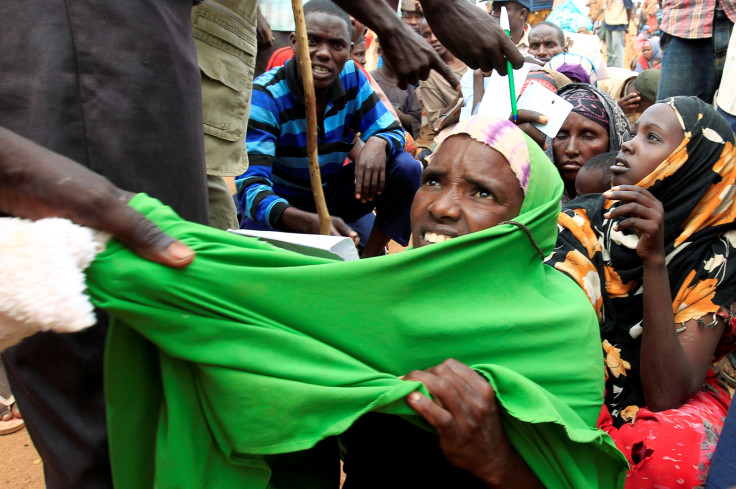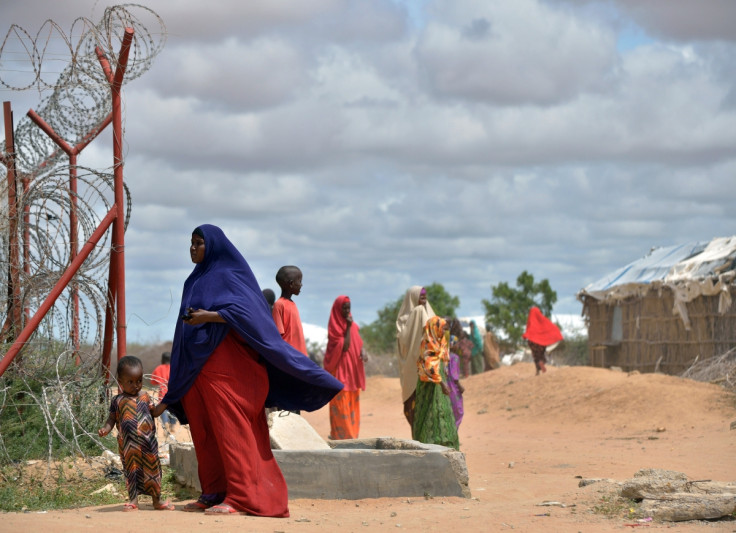Somali refugees in Kenya return to violence and sexual exploitation under UN-backed scheme
Somalia remains wracked by violence and al-Shabab terrorism.

After 25 years of vicious conflict that has cost countless lives and displaced millions of people, peace has finally broken out in south-central Somalia — at least that's what Kenya says. And the UN refugee agency, the United Nations High Commission for Refugees (UNHCR) has joined Kenya to tell the world it should now focus on helping as many refugees as possible to return home.
But I recently spoke with some of the estimated 320,000 Somali refugees in Dadaab, Kenya, the world's largest refugee camp. And it's clear that peace is the last thing some of those signing up for UNHCR's $400 repatriation cash handout are discovering.
A number of refugees told me they had returned destitute to destroyed Somali villages without health care provision and schools, or faced danger as armed groups continue to clash in and around their villages, including towns. After doing their best to survive, they fled back to Kenya, once again as refugees.
One of them is "Amina," a 38-year-old single mother. After a decade in Dadaab, she decided to try her luck and returned in January 2015 with her five children to her village, Bula Gudud, in the Lower Juba region, hoping to rebuild her life.
She told me: "After two days back home, fighting broke out between government troops and al-Shabab [armed Islamist group]. I could hear the bullets. My children were so scared. They just ran around, trying to get out of the house." The following day, Amina fled to the closest city, Kismayo. She had no relatives there but hoped she'd find safety and work to feed her children. She found neither.
She and her family barely survived for nine months with other displaced civilians in Kismayo's appalling internally displaced persons' camps. After a man in a government uniform raped her, a common occurrence in the unprotected and aid-starved camps across the country, Amina gave up and 10 months ago begged her way back to Dadaab.
But her ordeal didn't end there. The Kenyan authorities have refused to re-register her and her children as refugees, and UNHCR has not reactivated her ration card or given her any food.
"If we send 1,000 people home under the voluntary repatriation agreement but we then register 1,000 new arrivals, we would not get the job done," a Kenyan government official in Dadaab told me.
READ MORE : Kenyan refugees may be forced to join al-Shabaab or face sexual abuse if repatriated to Somalia
Kenya, Somalia and the UNHCR had signed an agreement in November 2013 on the "voluntary repatriation" of Somali refugees. It says that both countries and the UN would make sure that Somalis return voluntarily and safely and would get help to resettle back home. A few months later UNHCR said that "the security situation in many parts of ... Somalia [is] volatile [and] protracted ... conflict has had devastating consequences, including massive displacement, weakened community structures, gross human rights violations and the breakdown of law and order".
But Kenya has repeatedly referred to this agreement as evidence that it is time for all Somalis to go home, stressing that the UN agency should help Kenya "expedite" refugee repatriation.

Somali refugees have a collective memory of previous repeated attempts by Kenyan security forces to coerce "voluntary" returns. In late 2012, Kenyan police in Nairobi unleashed appalling abuses in an effort to enforce an illegal directive to drive tens of thousands of urban Somali refugees into the Dadaab camps and from there back to Somalia. In April 2014, Kenyan security forces, primarily police, carried out a second round of abuses against Somalis in Nairobi and then deported 359 a month later without allowing them to challenge their removal.
In May 2016, Kenya announced that "hosting refugees has to come to an end", that Somali asylum seekers would no longer automatically get refugee status and that the Department of Refugee Affairs, responsible for registering and screening individual asylum applications, would be disbanded.
So far, thankfully, the Kenyan police in Dadaab appear to have been acting properly and the refugees told us they had not been harassed or directly coerced. But they are all aware that the government intends to close the camp by the end of November. Everyone we spoke to expressed the fear that those who do not take the voluntary repatriation assistance package now will be forced back later this year with nothing.
Since mid-2015, Amina and at least another 4,000 Somali refugees have either returned to Kenya after facing conflict and hunger back home or fled to Dadaab for the first time.
But with refugee registrations now closed, Amina and the others won't get food aid. Their survival will depend on the kindness of neighbours or relatives whose own rations were slashed last year by a third because of a funding shortfall. Amina and other returnees and new arrivals will also be the first to face arrest and deportation for "illegal presence" if Kenya shuts down Dadaab in three months.
International and Kenyan law require the authorities to make sure that anyone seeking asylum in Kenya is fairly heard and, if found to need protection, gets it. As long as Kenya continues to shred its commitments, Amina and thousands of others like her will languish hungry and destitute in legal limbo and wake up every morning wondering whether they are about to be deported back to the dangers that many have repeatedly fled and still fear.
Laetitia Bader is an Africa researcher at Human Rights Watch.
© Copyright IBTimes 2025. All rights reserved.





















